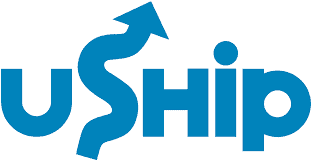During your quest to improve your supply chain management practices, you have likely encountered terms such as agile supply chain and lean principles. However, you might not be entirely sure what these methodologies are. More importantly, you might not have any idea as to how they can benefit your organization.
You are by no means the only one to encounter this conundrum. Lean and agile methodologies have some overlap, which can make it quite challenging to differentiate between the two when initially introduced to them.
That is why the FreightWaves Ratings team created this head-to-head comparison of the agile supply chain vs. lean principles. We recap what each methodology is and shed some light on their key differences.
What Is Agile Supply Chain?
At its core, an agile supply chain is one that exhibits a high level of agility, flexibility, resiliency, and responsiveness. Put more simply; agile supply chains can adjust on the fly based on real-time analytics data, rapidly changing market conditions, and other factors.
The agile supply chain is heavily reliant on forecasting. For example, a manufacturer will not perform final product assembly until just before demand necessitates it. Manufacturers using this approach will not amass large amounts of finished inventory, as this overstocking tactic hinders organizational agility.
What Are Lean Principles?
Lean principles are centered around the concept of value. In fact, the first of the five lean principles is to define value. The subsequent four principles are as follows:
- Map out the value stream
- Facilitate flow
- Generate pull
- Strive for perfection
During the first step, organizations must define what value is as it pertains to their products or services. Essentially, businesses must determine how much customers are willing to pay for their products.
From there, they will need to eliminate waste from the sales process and identify ways to deliver more value to customers. When leveraging lean principle number three, companies will need to create a smooth manufacturing flow by optimizing production processes, upskilling staff members, and redistributing the workload.
The fourth lean principle involves limiting inventory and implementing a just-in-time delivery framework. The goal is to manufacture precisely the amount of products that are needed, no more, no less.
Lean’s final principle is to chase perfection by continuously refining manufacturing and supply chain practices until they are as close to flawless as possible.
Comparing Agile Supply Chain and Lean Principles
When comparing lean vs agile, we examined speed and iteration, putting customers first, the role of discipline, production planning, and inventory control.
Speed and Iteration
Both agile and lean are quite similar in this regard. Speed is a top priority for both methodologies, as each concept discourages organizations from retaining massive amounts of finished inventory. Instead, agile and lean principles encourage organizations to generate products based on demand.
The key difference here is how the methodologies gauge demand. When using lean strategies, companies should produce exactly the number of items that have been ordered. Conversely, agile supply chains use predictive analytics to determine how many products a manufacturer should generate based on anticipated future demand.
Putting Customers First
Customer satisfaction is a top priority for both methodologies. However, each methodology seeks to achieve a high level of customer satisfaction in different ways.
The lean method involves reducing waste, which drives down manufacturing costs. This approach allows manufacturers to pass some savings onto consumers, thereby making their products more valuable.
Agile supply chains strive to put customers first by minimizing shipping delays and decreasing lead times on product orders. This approach ensures that customers get their orders in hand as efficiently as possible.
Role of Discipline
Agile is a much more regimented methodology, which is no surprise as inventory decisions are made using real-time analytics data. Modern agile methodologies typically involve systematic process reviews, data analysis, and demand estimation techniques.
Lean principles serve as more of an organizational belief system. While staff members must adhere to these principles in order to effectively implement the lean approach, the entire process is far less regimented and rigid.
Production Planning
As noted earlier, agile supply chains attempt to maximize flexibility by delaying final assembly processes for as long as possible. For instance, let’s say that analytics data suggests that an organization will experience a major uptick in product demand in Q4 of 2022. An agile entity would not begin final assembly until the final month of Q3.
This example is an oversimplification of agile supply chain management, but it does adequately convey the basic production planning principles.
If that same company strictly adhered to lean principles, it would not begin producing goods until they were ordered. Therein lies the most notable difference between lean vs agile.
Inventory Control
Both lean and agile methodologies involve rigorous inventory control. The premise is that overinvesting in large amounts of inventory can be wasteful while also tying up an organization’s working capital.
Lean vs Agile: Which Methodology Is Best for Supply Chain Management?
Although we would like to declare a clear winner between agile thinking and lean principles for the sake of convenience, the fact of the matter is that there isn’t one.
Both lean principles and agile practices can be used to preserve business continuity and streamline supply chain management while also delivering more value to customers. Therefore, lean and agile supply chains should be viewed as complementary methodologies, not opposing ones.
With that in mind, we recommend assessing the needs of your organization and clearly identifying its most distinct supply chain challenges. From there, you can determine which facets of each methodology best address your organizational goals, needs, and pain points.
FAQ
A supply chain can leverage principles from both agile and lean methodologies. In fact, this is the preferred approach in many instances.
The primary difference is that lean principles focus on eliminating waste and generating more value for customers. Conversely, agile principles are geared towards maximizing resiliency and preserving business continuity.
Agile supply chains are far more resilient, especially when faced with unpredictable challenges, such as those that arose during the pandemic. Modern agile supply chains also improve organizational flexibility, which allows businesses to capitalize on emerging opportunities.
Sign up for a FreightWaves e-newsletter to stay informed of all news and trends impacting supply chain careers and operations.


